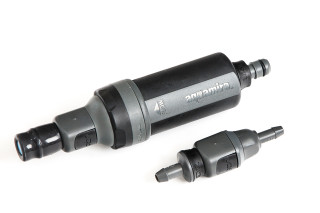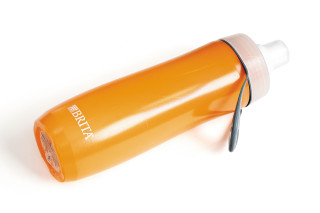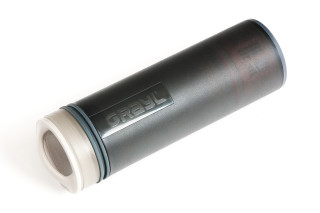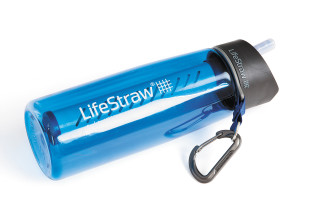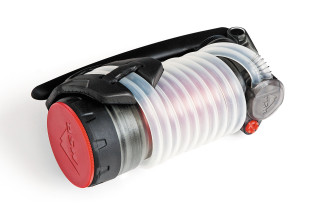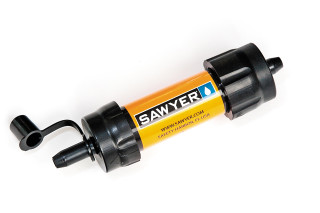When it comes to choosing everyday-carry gear, less is more. EDC is all about maximizing your capability to solve daily problems, and doing so as efficiently as possible. Heavy, bulky, single-function tools don’t belong in this category — the goal is not to look like the tacticool version of Batman, with a utility belt packed full of oddly-specific gadgets. EDC tools should be justified based on their size, weight, durability, and effectiveness at a variety of tasks. If these variables are out of whack, the tool probably doesn’t belong in your pocket.
The tactical pen is a perfect example of a multi-purpose EDC tool. It’s undeniably handy for jotting notes and filling out paperwork on a day-to-day basis, but is also designed for use as an impact weapon in self-defense scenarios. And, much like pocket knives, tactical pen designs range from basic and affordable to intricate and exotic.

Tuff Writer Tactical Pens
Today, Tuff Writer is an industry-leader in the tactical pen market, but the company started out as a personal project by founder Jack Roman.

About eight years ago, Jack designed and produced his first tactical pens for members of his martial arts training group in Chandler, Arizona. He writes, “We trained everything from empty hand to stick, knife, and improvised weapons tactics… I suggested that someone should make a pen that would serve as an improvised defensive tool. [My instructor’s] reply was, ‘Great idea [expletive], why don’t you do that and make us some.'”
Editor’s Note: In this article, we’ll share some excerpts of our interview with Jack Roman, but there’s a lot more info about his journey with Tuff Writer that we couldn’t fit here. Click here to read the entire uncut interview with more of Jack’s thoughts and insights.

The Frontline was Jack’s first tactical pen design, and showed that Tuff Writer was a viable business.
“The idea was just stuck in my head. So I took the money I had in savings, hired a mechanical engineer to help me with the first design, and got to work.” The end result was the Tuff Writer Frontline tactical pen. Through word-of-mouth and the launch of the company’s web site, orders were soon pouring in from law enforcement officers, military members, and martial artists from far and wide.

The Tuff Writer Operator series was inspired by the success of the original Frontline.
Jack continued to build on this success through tooling improvements and new designs. As Tuff Writer grew, he remained determined to continue designing and manufacturing the pens in the USA.
He writes, “Outsourcing was never part of the plan. That was a conscious decision from the very start… You can usually make it cheaper somewhere else but rarely can you make it better somewhere else. For us, keeping manufacturing in the USA is and always will be a core value. We now have 3 CNC machines and do everything from design to prototyping and machining as well as post machine finishing (tumbling, brushing, flaming and polishing, etc.) in-house.”
The Original Mini-Click
After several well-received capped pen designs, Jack saw the demand for a tough tactical pen with the convenience of a click mechanism. His friends Roy Huntington and Mike Janich also suggested a smaller model for shirt-pocket carry, and this led to the creation of the Mini-Click. The first-generation aluminum Mini-Click was launched on Kickstarter, and quickly developed a strong fan base.

The original Mini-Click was designed with a small footprint for carry in a shirt pocket.
After the Mini-Click Kickstarter project took off, Jack listened intently to his customers. “Quite a few people started asking about a titanium version. I took the opportunity to incorporate some small design improvements here and there based on user feedback, and pretty soon I found that virtually every piece had changed. We were looking at a Gen-2 Mini-Click.”

Jack went back to the drawing board for Gen 2. Nearly every piece of the pen has been revised.
In January 2017, the second-gen Tuff Writer Mini-Click pen launched on Kickstarter. That same month, we met Jack at SHOT Show in Las Vegas, and he graciously gave us one of the very first Mini-Click Gen 2 pens to test and review. After bringing it back home, snapping some photos, and using it for several weeks, we’ll share our thoughts on this new tactical pen.
Mini-Click Gen 2 Review

The first thing you’ll notice about the all-new Mini-Click pen seen here is its core component: titanium. You won’t even need to pick it up to tell the difference — its flamed finish produces colorful bands that indicate this pen isn’t aluminum like its predecessor.

When exposed to intense heat, the titanium changes color from neutral grey to warm brown, then purple, and finally vibrant blue. This multi-colored treatment is applied by hand; Tuff Writer’s Kickstarter says every pen is different, “like a snowflake, a virtually indestructible titanium snowflake.”
In person, the flamed finish is a real head-turner, and it received compliments almost every time it came out of our pockets. Even those who would normally be disinterested in EDC gear were saying, “Wow, that’s a cool pen.”

Of course, this isn’t the only finish available for the new Mini-Click — far from it. Here’s a quick list of some of the other materials and finishes Tuff Writer currently offers:
- Titanium (Grade 5 / 6AL4V) – polished, blasted, tumbled, brushed, or flamed
- Copper (C145 Tellurium) – polished, flamed, or tumbled
- Brass (360) – polished, tumbled, or aged

The new Mini-Click pens are available in three materials and many different finishes.
The new materials and finishes give the Mini-Click Gen 2 a new look, but the changes are more than skin-deep. Numerous subtle modifications have been implemented to make the second-generation pens more versatile and easier to use.

Recessed, firmer O-rings improve comfort and grip.
Jack summarized a few technical changes:
- Tip opening is now .002″ larger to accept Fisher, Foray, Parker, Waterman and many other common ink refills
- Top O-ring groove is now also below the tip-to-body mating seam
- O-rings are Buna-70 (a firm rubber) and thicker as well as being recessed deeper
- Clip is slightly thinner to aid flexibility
- Updated 416SS mechanism with improved race design (custom tooling to cut the race and remove burs in one toolpath)

These modifications would almost certainly go unnoticed unless you were looking for them. However, they demonstrate the degree of focus and care that Tuff Writer puts into these pens. They’re not just writing instruments, they’re precision-machined tools. Jack is clearly not one to say a design is good enough — he’s continuously looking for ways to improve his product.

Technical aspects aside, the new 416SS click mechanism is definitely worth mentioning. Instead of buying one of the many plastic or brass advancing mechanisms from an outside manufacturer, Tuff Writer designed and built its own proprietary mechanism from 416 stainless steel. This is machined on an ultra-precise Citizen L20 Swiss-type CNC lathe, and dimensions are controlled down to absurd 0.0005-inch tolerances. The machined pieces and chrome ball-bearings are assembled by hand under a magnifier.

You may ask, why does this matter? First of all, it makes the click incredibly smooth, which feels great under the thumb. More importantly, it’s extremely strong and reliable. For a pen that’s designed to be used as a self-defense impact weapon and slammed into hard objects, that’s a must.

The bottom line: retail MSRP for the titanium Mini-Click seen here is $155, including a $5 premium for the flamed finish. Brass and copper models will be available for $125 retail. If you’re looking to save some cash, limited-time discounts are currently available on Kickstarter. Those who back the project before it ends on Monday, February 27th can get a brass or copper pen for $96, or a titanium pen for $100.

Some will say this is a lot of money for a pen, but it should be obvious that this is certainly no ordinary pen. As is true for high-end knives, watches, and other precision-machined items, quality craftsmanship doesn’t come cheap — and this is about as high-quality as an EDC pen can conceivably get. We’re also encouraged by Jack’s commitment to American manufacturing. In his own words, “we make the best products we know how to make, and then stand behind them all the way.”
Conclusions

Whether you’re looking for a writing instrument that’s capable of withstanding the apocalypse, or you just need something reliable to write with on a daily basis, there’s a lot to like about the new Mini-Click. It looks like a work of art, feels sturdy, and it’s built like a Swiss watch.

Most importantly, it’s exceedingly comfortable to use, since the recessed O-rings provide substantial grip without shredding your finger after the first paragraph. We tried ink refills from a few other pens to confirm that they work, but preferred the included Fisher Space Pen cartridge. Still, it’s nice to have the expanded compatibility as an option.

Tuff Writer also makes this anodized aluminum D22 keychain carabiner, which doubles as a bottle-opener.
The Tuff Writer Mini-Click Gen 2 sets a high bar for tactical pens, and for pens in general. There’s only one catch: like the flawless edge on a brand-new knife, it looks so good that we almost hesitate to subject it to the beating it’s designed to withstand. Oh well — scratches build character, and this tool is meant to be used.
At the end of our conversation, Jack left us with these words:
“Thank you to everyone who has come along on the ride with us. I feel privileged to be a part of this industry and the community. I’m a big believer in the idea that we’re all in it together, to that end I invite everyone to keep in touch by following us on Instagram or on Facebook and see what we’ve got going on. Also, stop by at the shows to say hi, or send us an email telling us what you think or what you’d like to see next.”

For more information on the Tuff Writer Mini-Click Gen 2, visit the company’s Kickstarter page. For news and info on other Tuff Writer products, go to TuffWriter.com.







































